Córdoba Argentina tourism offers a vibrant mix of history, culture, and natural beauty, making it a worthwhile destination. SIXT.VN is here to guide you through this captivating city, ensuring a seamless and unforgettable travel experience in Argentina. Explore our guide to unlock the best of Córdoba.
1. Discovering Córdoba: A Comprehensive Guide
Córdoba, Argentina’s second-largest city, provides a captivating blend of historical charm and modern vibrancy. Often overshadowed by Buenos Aires, Córdoba offers a unique travel experience that is both enriching and accessible. This guide delves into the heart of Córdoba Argentina tourism, highlighting key attractions, local experiences, and practical travel tips to ensure an unforgettable visit. Whether you are a history enthusiast, a foodie, or an outdoor adventurer, Córdoba has something to offer every traveler. Let’s explore what makes Córdoba a must-visit destination in Argentina.
1.1. What Makes Córdoba a Unique Tourist Destination?
Córdoba stands out as a unique tourist destination due to its rich blend of historical significance and modern urban life. Founded in 1573, Córdoba boasts a well-preserved colonial architecture that reflects its Spanish heritage, making it a historical treasure trove. The city is home to the oldest university in Argentina, the National University of Córdoba, which infuses it with a youthful energy and vibrant cultural scene.
According to a study by the National Institute of Statistics and Census of Argentina, Córdoba consistently ranks among the top destinations for both domestic and international tourists due to its cultural attractions and historical sites.
Beyond its historical and cultural appeal, Córdoba offers diverse culinary experiences, from traditional Argentine cuisine to international flavors, reflecting its multicultural influences. The city’s surrounding natural landscapes, including the Sierras de Córdoba, provide opportunities for outdoor adventures, making it an ideal destination for those seeking a balanced travel experience.
1.2. Who Should Visit Córdoba?
Córdoba appeals to a wide range of travelers:
- History Buffs: Explore well-preserved colonial architecture and historical landmarks.
- Culture Enthusiasts: Immerse in the city’s vibrant arts, music, and theater scene.
- Foodies: Indulge in diverse culinary experiences, from traditional Argentine cuisine to international flavors.
- Outdoor Adventurers: Discover the natural landscapes of the Sierras de Córdoba.
- Students: Experience the vibrant, youthful energy of a major university town.
- Families: Enjoy family-friendly attractions and activities.
1.3. Quick Córdoba Facts
| Fact | Detail |
|---|---|
| Location | Central Argentina, at the foot of the Sierras Chicas mountains |
| Population | Approximately 1.5 million |
| Climate | Temperate, with warm summers and mild winters |
| Currency | Argentine Peso (ARS) |
| Language | Spanish |
| Time Zone | Argentina Time (ART), UTC-3 |
| Main Attractions | Historic Quarter, Jesuit Block (UNESCO), Sierras de Córdoba |
| Local Cuisine | Asado, empanadas, locro |
| Getting Around | Public buses, taxis, ride-sharing apps, walking |
| Safety | Generally safe; take precautions against petty theft |
2. Must-See Attractions in Córdoba
Córdoba Argentina tourism boasts a wealth of attractions that cater to diverse interests. Here are some of the top sights you shouldn’t miss:
2.1. The Historic Quarter
The Historic Quarter of Córdoba is a UNESCO World Heritage site and the heart of the city’s historical and cultural identity.
2.1.1. Plaza San Martín
Plaza San Martín is the central square of Córdoba, surrounded by significant historical buildings.
- Historical Significance: Founded in 1577, it was the original center of the Spanish-planned city.
- Key Features: The plaza features a large bronze statue of José de San Martín, a key figure in Argentina’s independence.
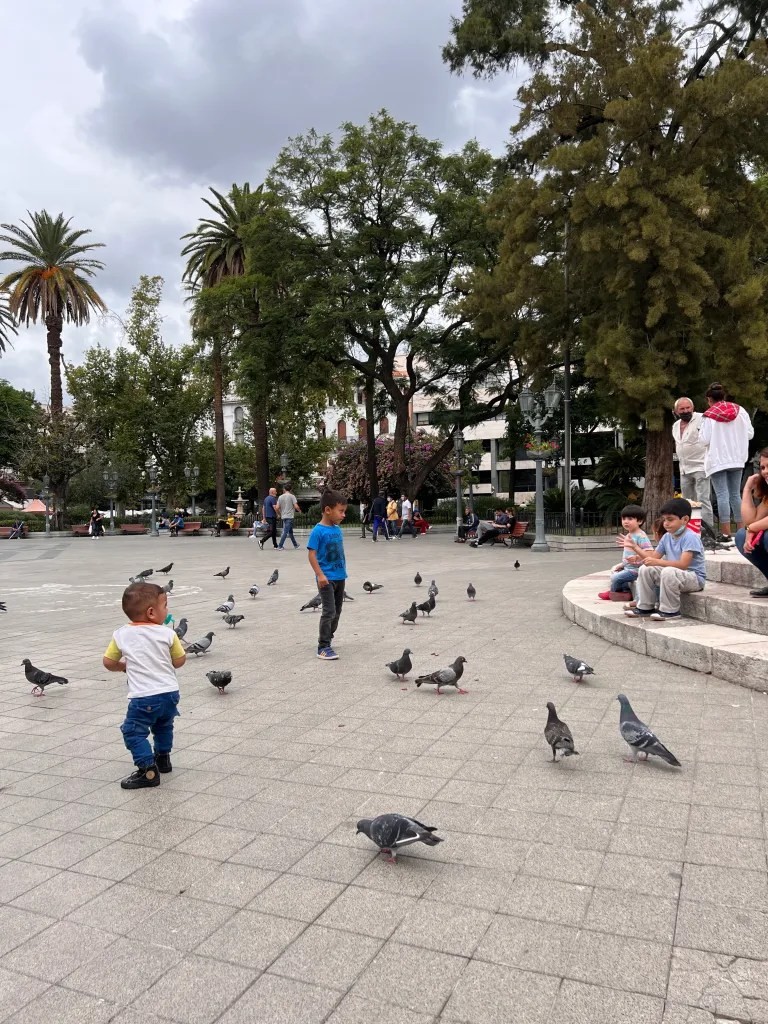 The statue in the center Cordobas main plaza, kids are playing with birds
The statue in the center Cordobas main plaza, kids are playing with birds
2.1.2. Córdoba Cathedral
The Córdoba Cathedral, officially known as the Cathedral of Our Lady of the Assumption, is a stunning example of colonial architecture.
- Architectural Style: A blend of Baroque and Neoclassical styles.
- Historical Significance: Construction began in 1582 and was completed in the late 1700s.
 The AMOCBA sign on the street in the front of the cathedral
The AMOCBA sign on the street in the front of the cathedral
2.1.3. El Cabildo
El Cabildo is a historical building that once served as the political center during Spanish colonization.
- Current Use: Now a historical museum, showcasing tools used by indigenous people, old maps, and relics from the time of European immigration.
- Tours: Guided tours are available in Spanish, offering insights into the city’s history.
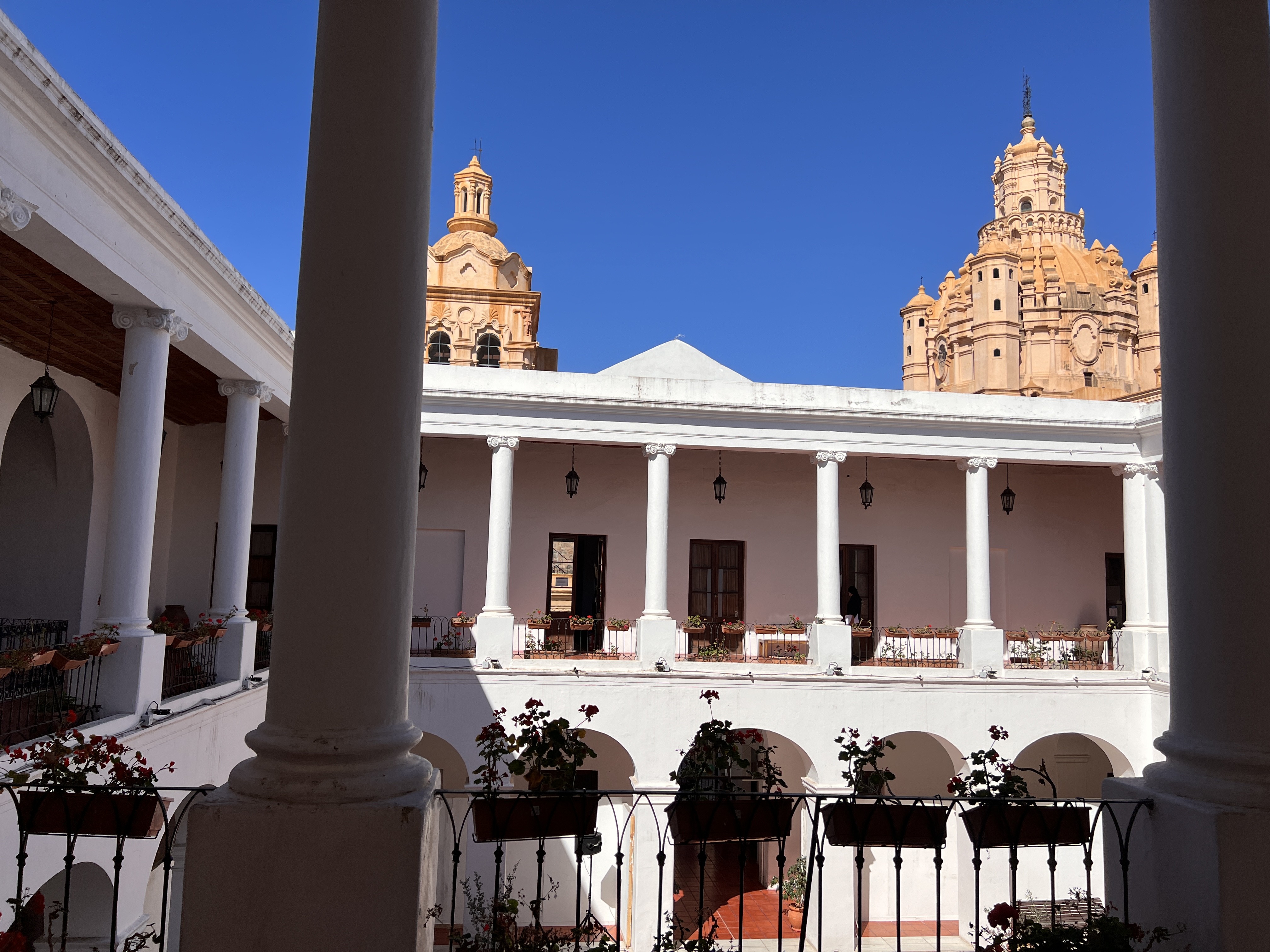 El Cabildo in Cordoba
El Cabildo in Cordoba
2.2. The Jesuit Block
The Jesuit Block is another UNESCO World Heritage site, comprising a group of religious and educational buildings from the 17th and 18th centuries.
2.2.1. Compañía de Jesús Church
The Compañía de Jesús Church is a central element of the Jesuit Block.
- Architectural Style: Baroque.
- Key Features: Ornate interiors and historical significance as part of the Jesuit missions.
2.2.2. Monserrat School
The Monserrat School is one of the oldest secondary schools in Argentina.
- Historical Significance: Founded in the 17th century.
- Current Use: Still functioning as an educational institution, preserving its historical legacy.
2.2.3. University of Córdoba
The University of Córdoba, officially the National University of Córdoba, is the oldest university in Argentina.
- Historical Significance: Founded in 1613.
- Cultural Influence: Continues to be a major educational and cultural institution in Argentina.
2.3. Iglesia del Sagrado Corazon (Capuchinos Church)
The Iglesia del Sagrado Corazon, also known as the Capuchinos Church, stands out with its neo-Gothic European style.
- Architectural Style: Neo-Gothic.
- Completion Date: 1934.
 Nicki stands in front of the Capuchin in Cordoba Argentina
Nicki stands in front of the Capuchin in Cordoba Argentina
2.4. Museo de las Mujeres (Museum of Women)
The Museo de las Mujeres is dedicated to art created by women, focusing on feminist and anti-racist works.
- Exhibits: Features exploratory art, projections, and embroidered works.
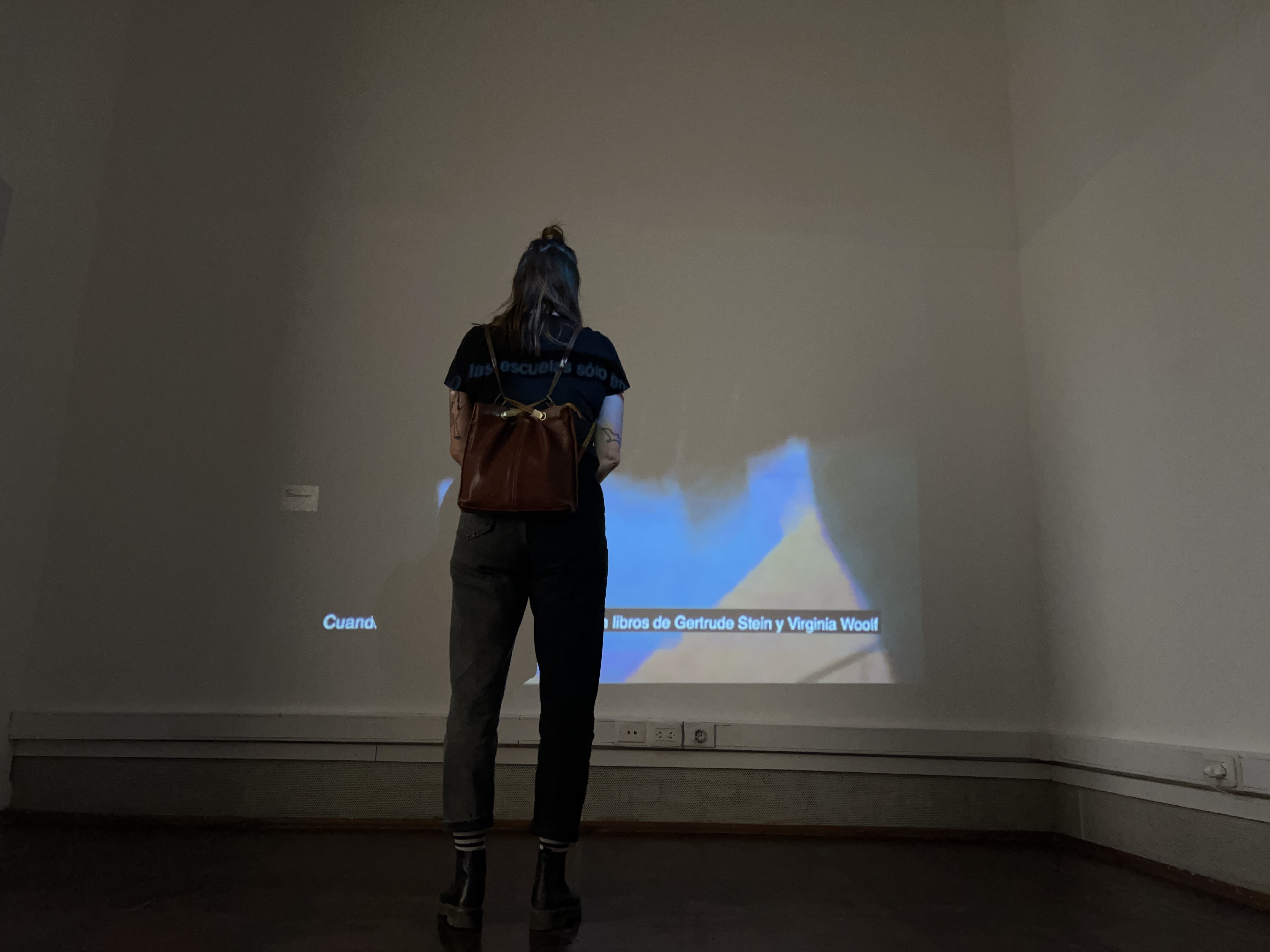 Museo de las Mujeres
Museo de las Mujeres
2.5. Paseo de las Artes and the Feria
The Paseo de las Artes is a vibrant arts and crafts market.
- Timing: Comes alive on weekend evenings.
- Offerings: Jewelry, plants, books, vintage records, and various market buildings.
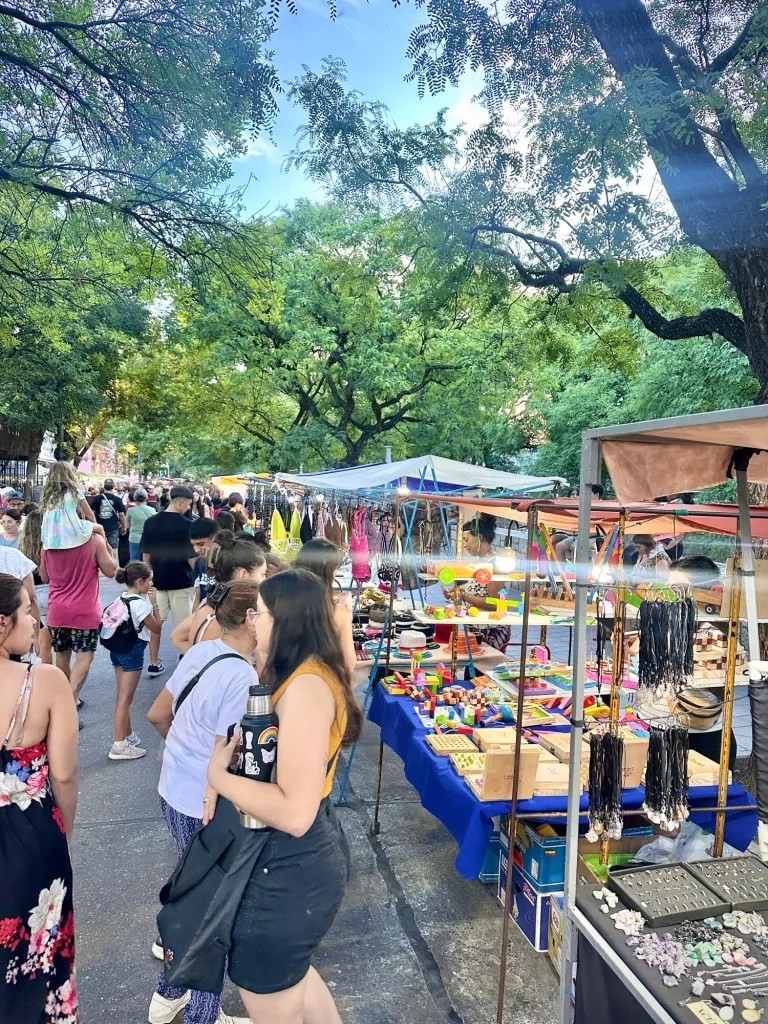 Several people walk around the weekend market near the canal, it is one of the best Things to Do in Córdoba.
Several people walk around the weekend market near the canal, it is one of the best Things to Do in Córdoba.
2.6. Palacio Ferreyra (Ferreyra Palace)
Palacio Ferreyra, once a 35-bedroom home for the Ferreyra family, now houses the Museum of Fine Arts.
- Exhibits: Landscape and portrait oil paintings from the 17th and 18th centuries, contemporary art on the upper floors.
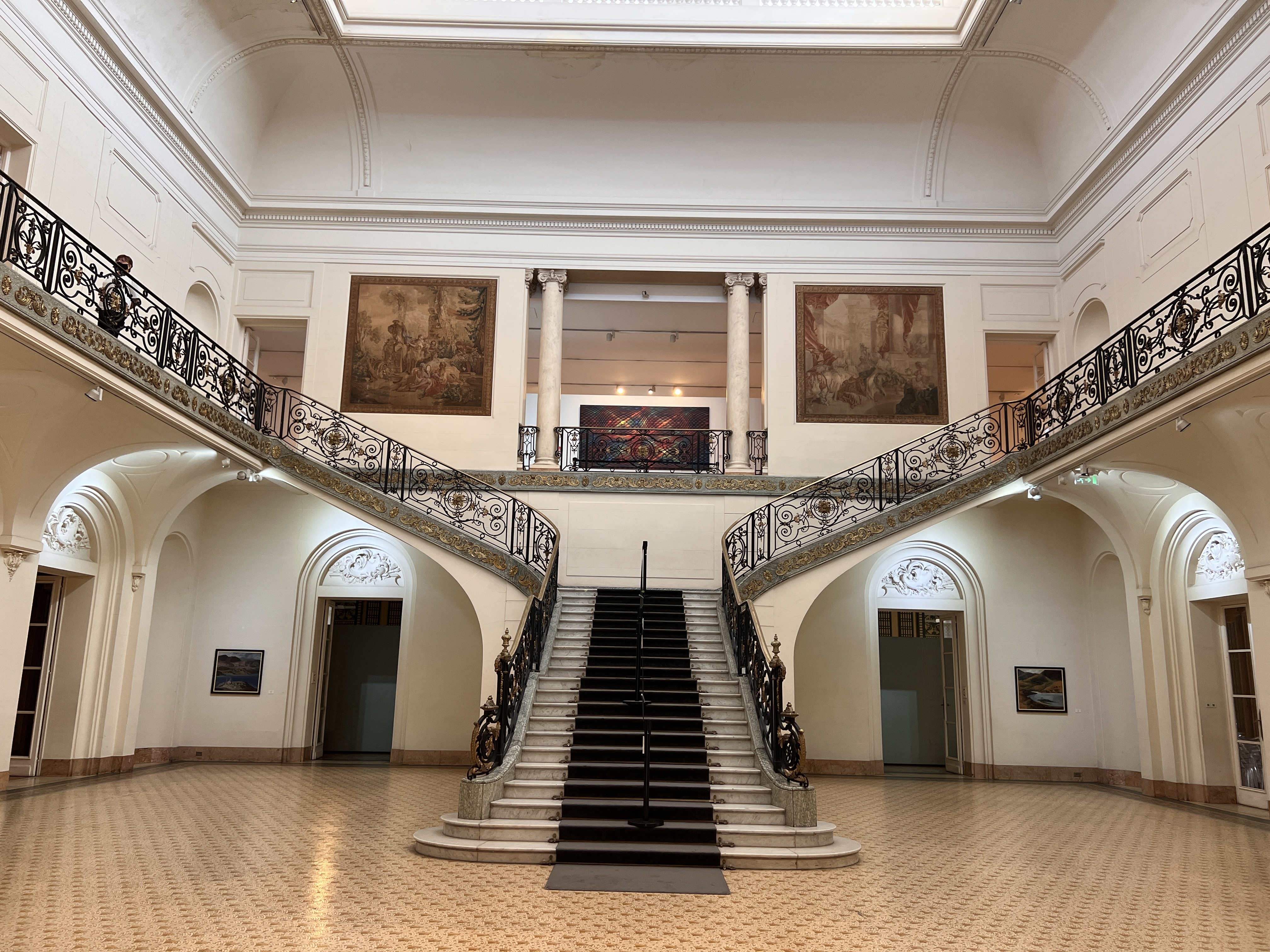 Palacio Ferreyra
Palacio Ferreyra
2.7. Museo Caraffa (Caraffa Museum)
Located near Parque Sarmiento, the Museo Caraffa features contemporary art exhibitions.
- Exhibits: Constant rotation of contemporary exhibitions across multiple floors and rooms.
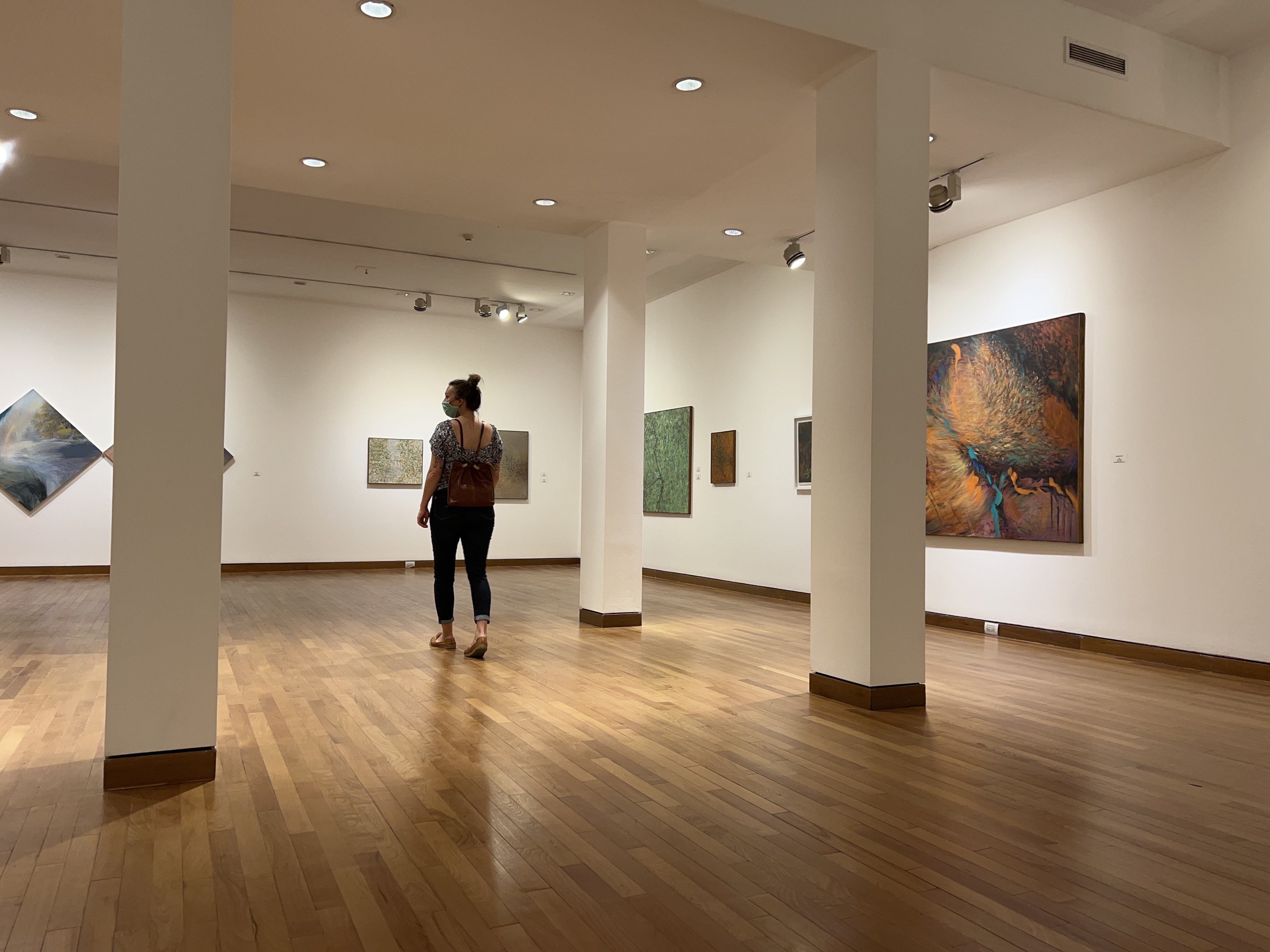 Museo Caraffa
Museo Caraffa
2.8. Plaza del Bicentenario
Plaza del Bicentenario is a corner park with oversized, brightly colored rings, each marked with a date and corresponding Argentine history.
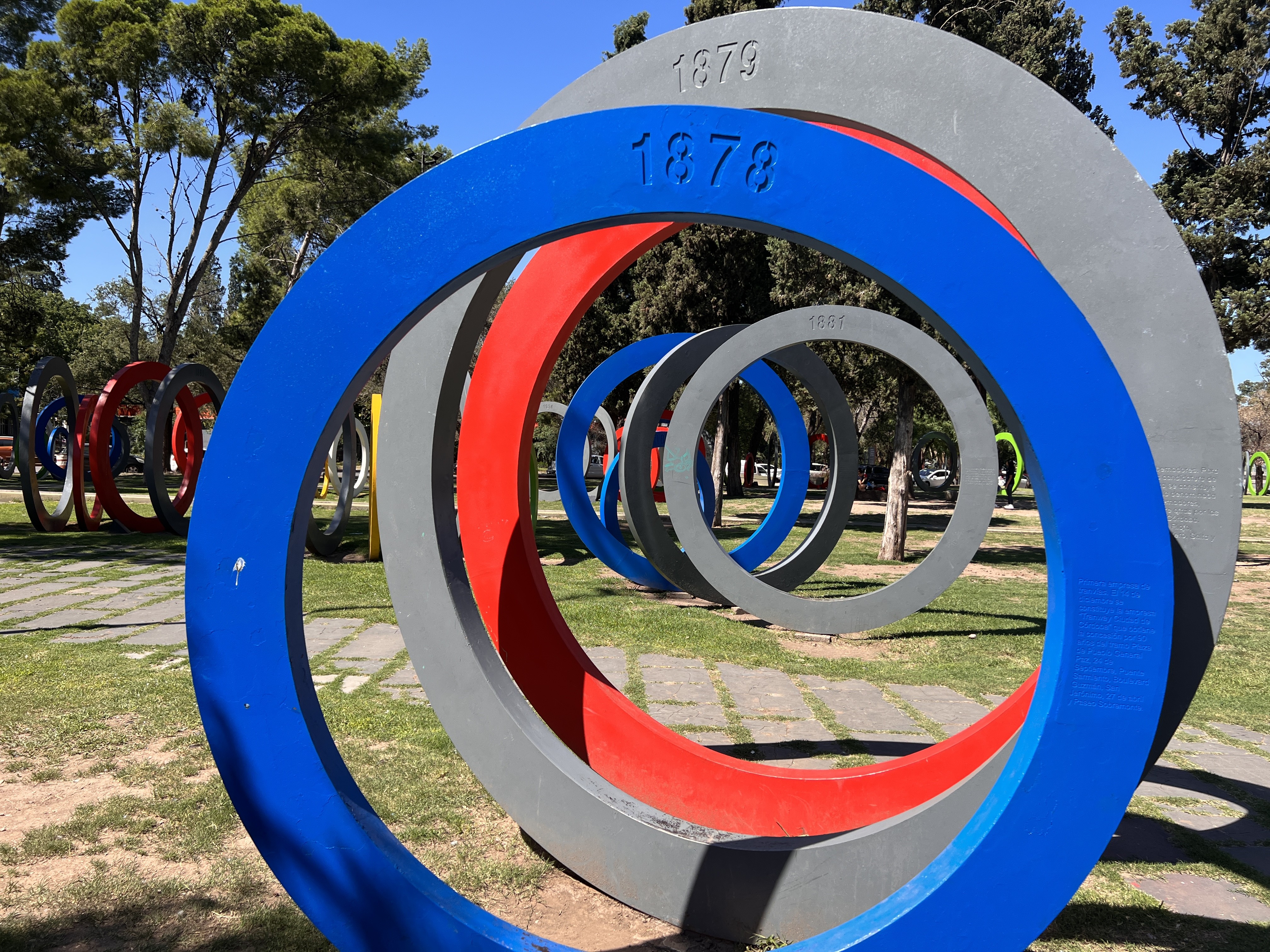 Plaza del Bicentenario
Plaza del Bicentenario
2.9. Parque Sarmiento
Parque Sarmiento is a large urban park offering various recreational activities.
- Key Features: Rose garden, zoo, lakes, cafes, food trucks, and walking trails.
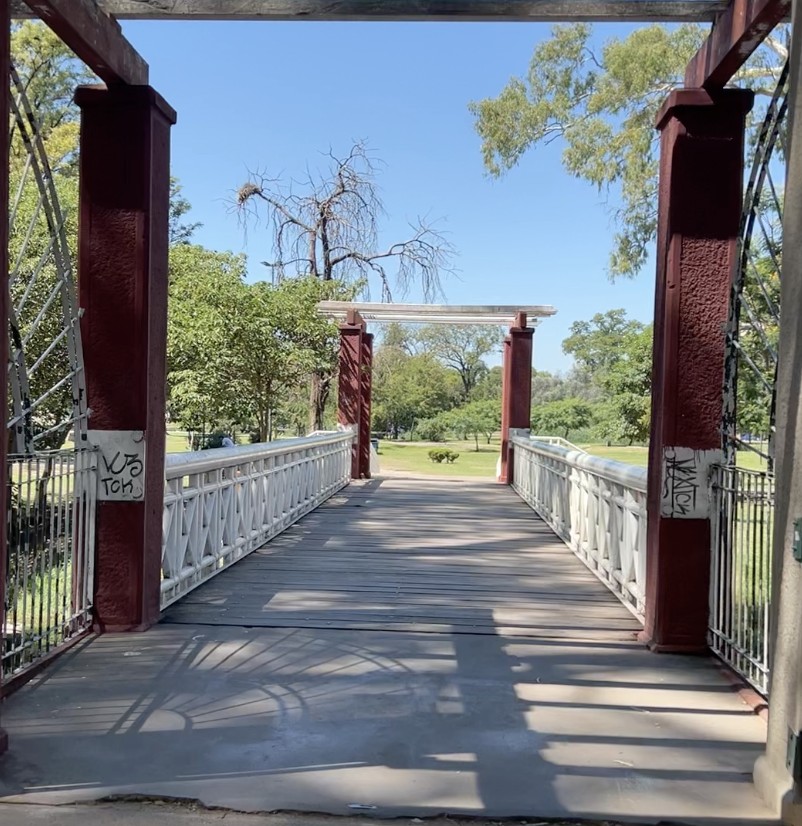 Parque Sarmiento
Parque Sarmiento
2.10. La Rueda Eiffel (Eiffel Wheel)
La Rueda Eiffel is the remains of a Ferris wheel designed by Gustave Eiffel.
- Historical Significance: Originally purchased from Tucuman in 1918, but faced structural issues shortly after.
- Current Status: Closed to the public but can be viewed from the perimeter.
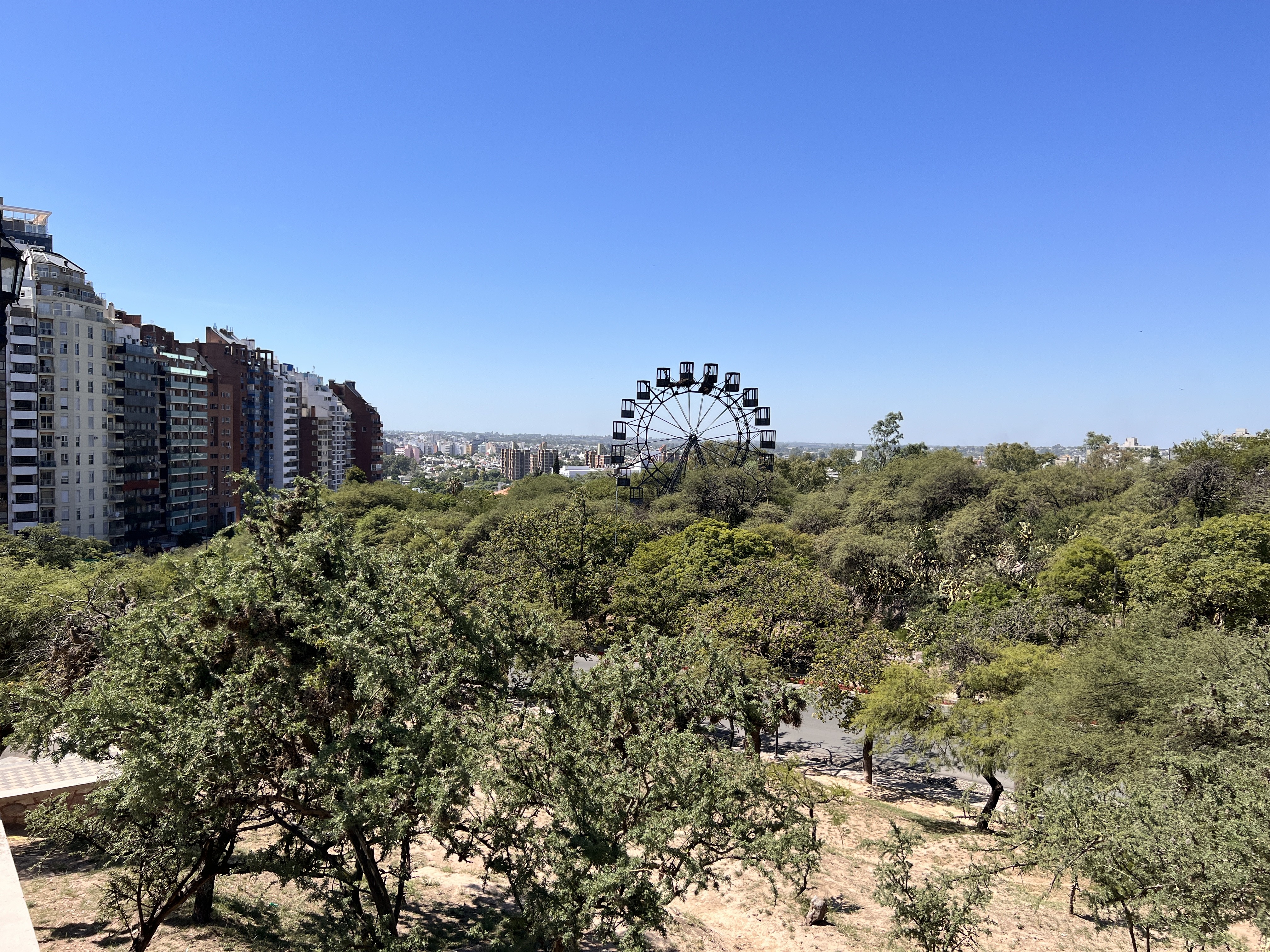 La Rueda Eiffel
La Rueda Eiffel
2.11. Rio Suquía
Rio Suquía is a river that runs through the city, offering scenic walking paths and street art.
- Activities: Walking, biking, and enjoying the riverbanks.
- Art: Street art along the river adds to the vibrant atmosphere.
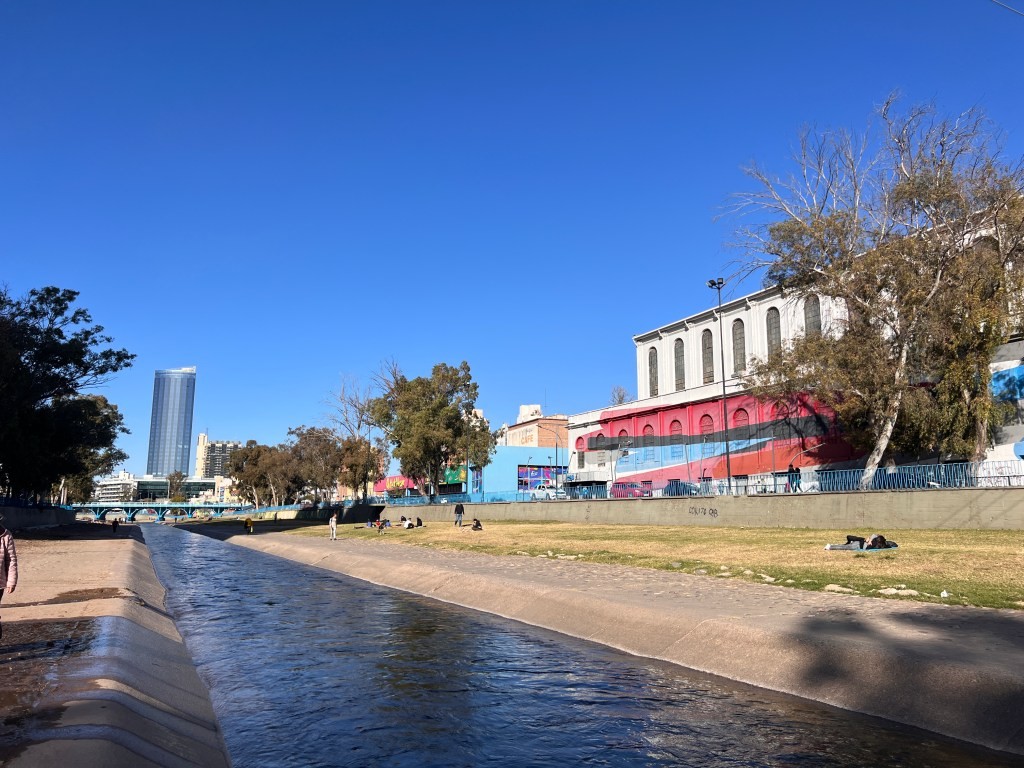 Rio Suquia in Cordoba
Rio Suquia in Cordoba
2.12. The Walking Streets
Córdoba features pedestrian-only streets lined with shops, restaurants, and street performers.
- Atmosphere: Bustling with activity, offering a variety of goods and entertainment.
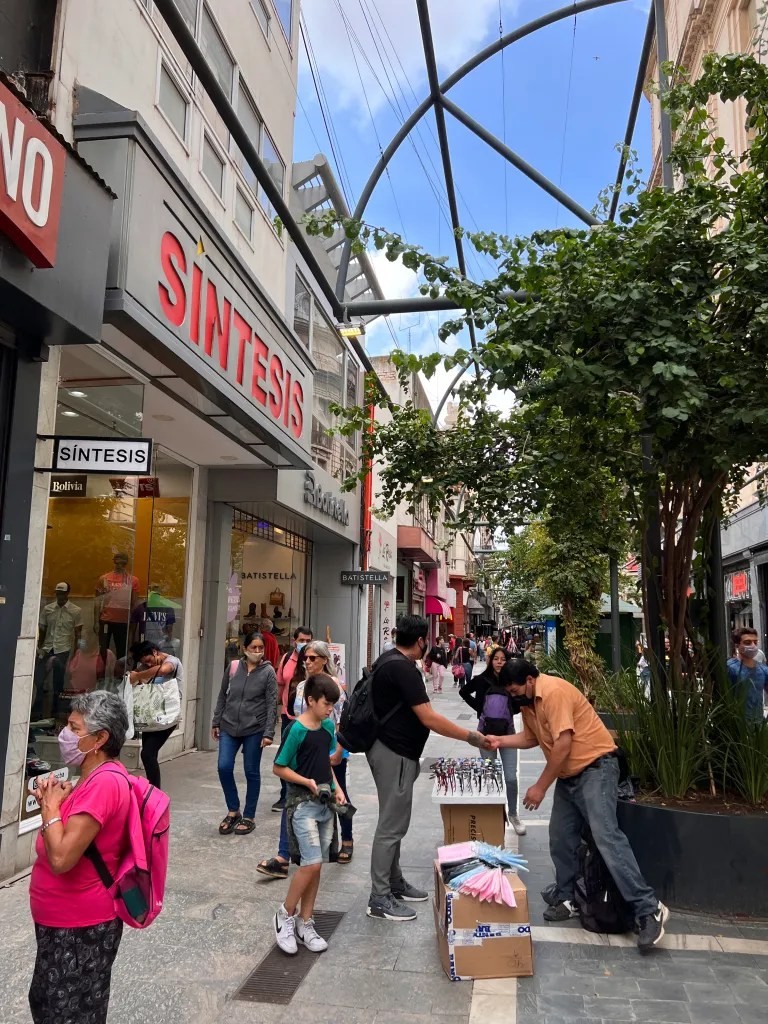 The walking street of Cordoba
The walking street of Cordoba
2.13. Ciclovía Elevada
The Ciclovía Elevada is an elevated track for bicycles and pedestrians, connecting several neighborhoods.
- Accessibility: Open to both bicycles and pedestrians.
- Safety: Equipped with lights for safe nighttime travel.
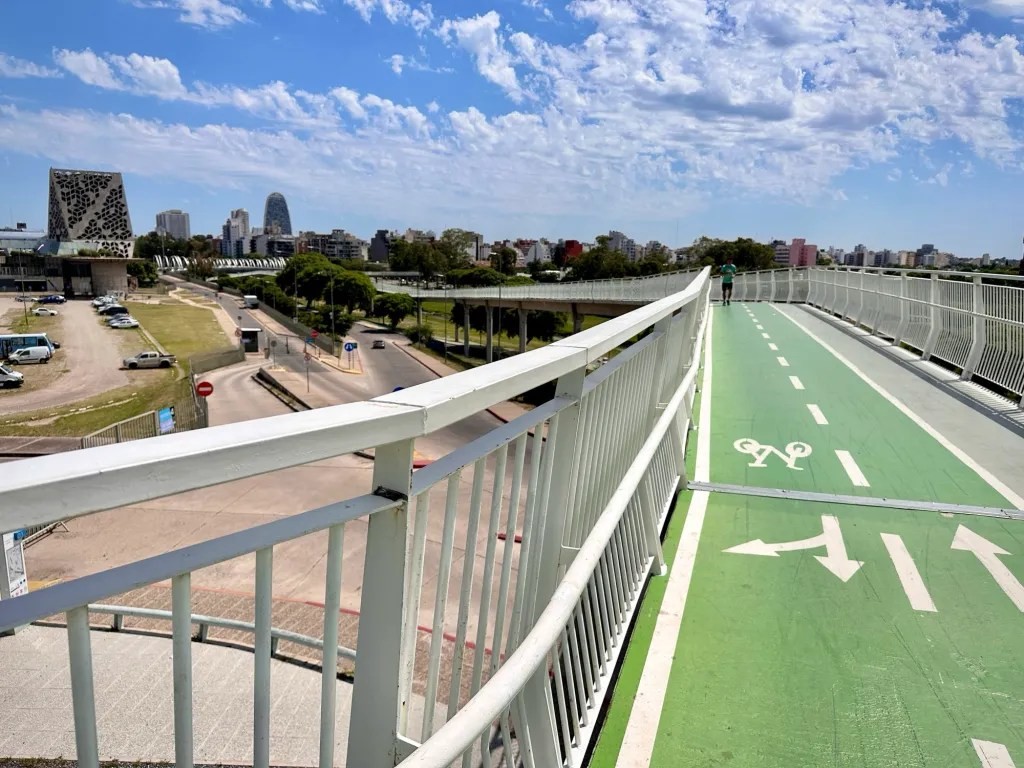 The Ciclovia track in Cordoba Capital
The Ciclovia track in Cordoba Capital
3. Culinary Delights: Where to Eat in Córdoba
Córdoba’s culinary scene is diverse and vibrant, offering a range of dining options to suit every taste. Here are some notable places to eat in Córdoba:
3.1. Santa Calma
Santa Calma is a cafe/restaurant/bar located on the edge of Sarmiento Park.
- Atmosphere: Cozy outdoor setting, ideal for lunch, dates, or evening drinks.
- Offerings: Fresh juices and a variety of lunch dishes.
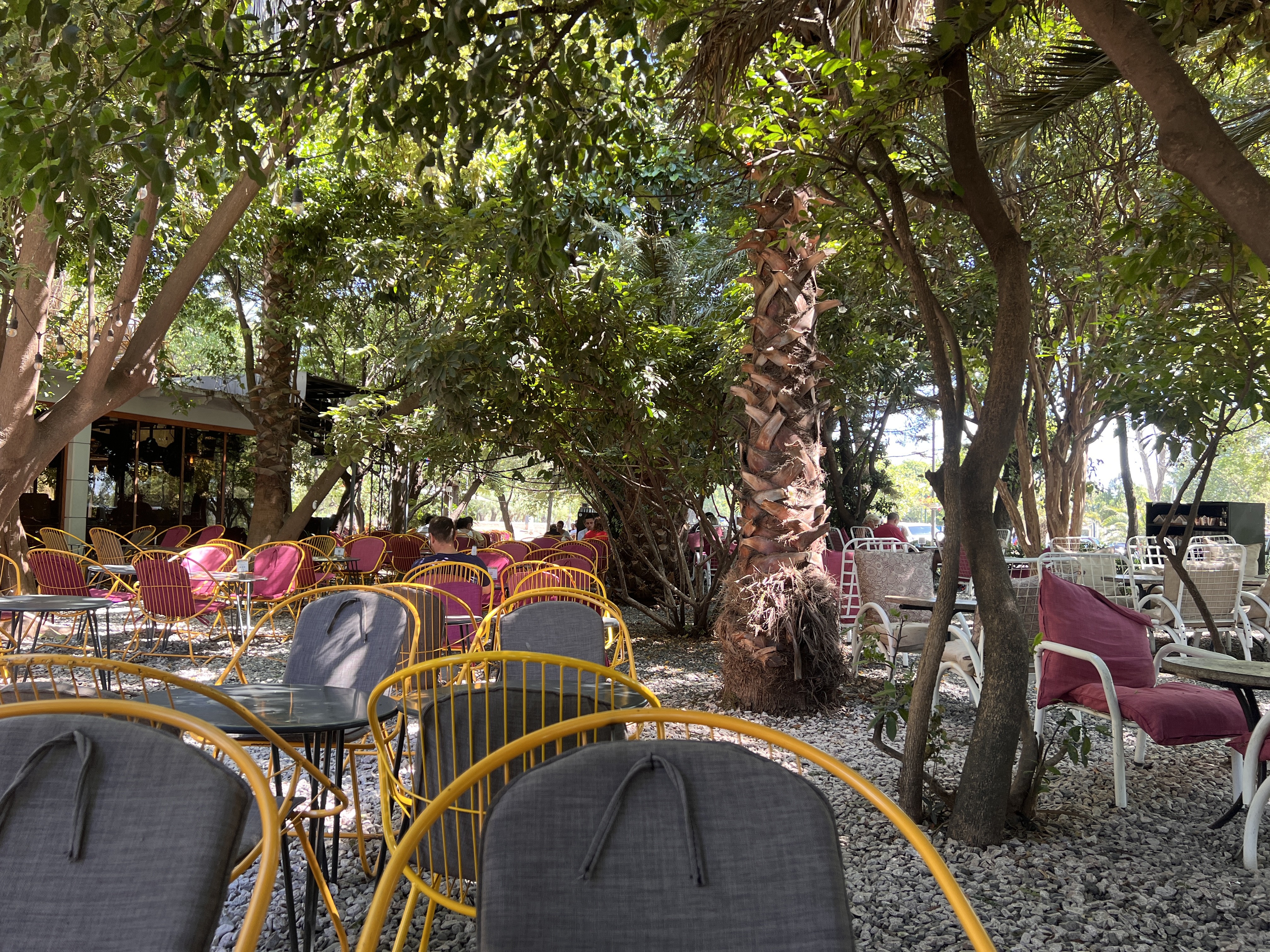 Santa Calma
Santa Calma
3.2. El Dante
El Dante is a food truck specializing in choripan, located near Parque Sarmiento.
- Specialty: Known for serving the best choripan in Córdoba.
- Features: Offers various toppings and nearby benches for seating.
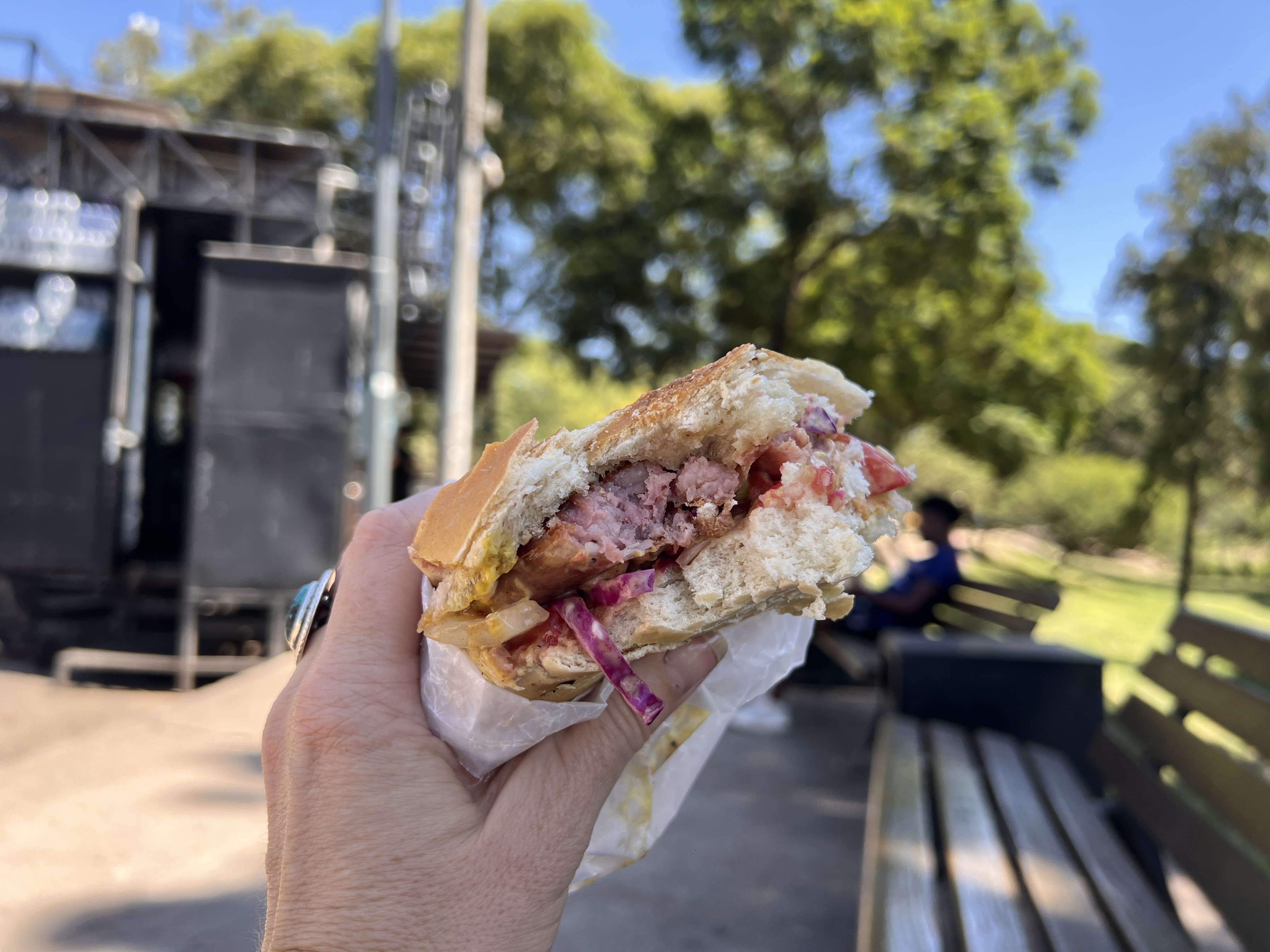 El Dante
El Dante
3.3. La Capke
La Capke has two locations in Guemes and General Paz, both known for their cozy ambiance.
- Offerings: Brunch dishes, including eggs benedict on a croissant and salmon lox sandwiches.
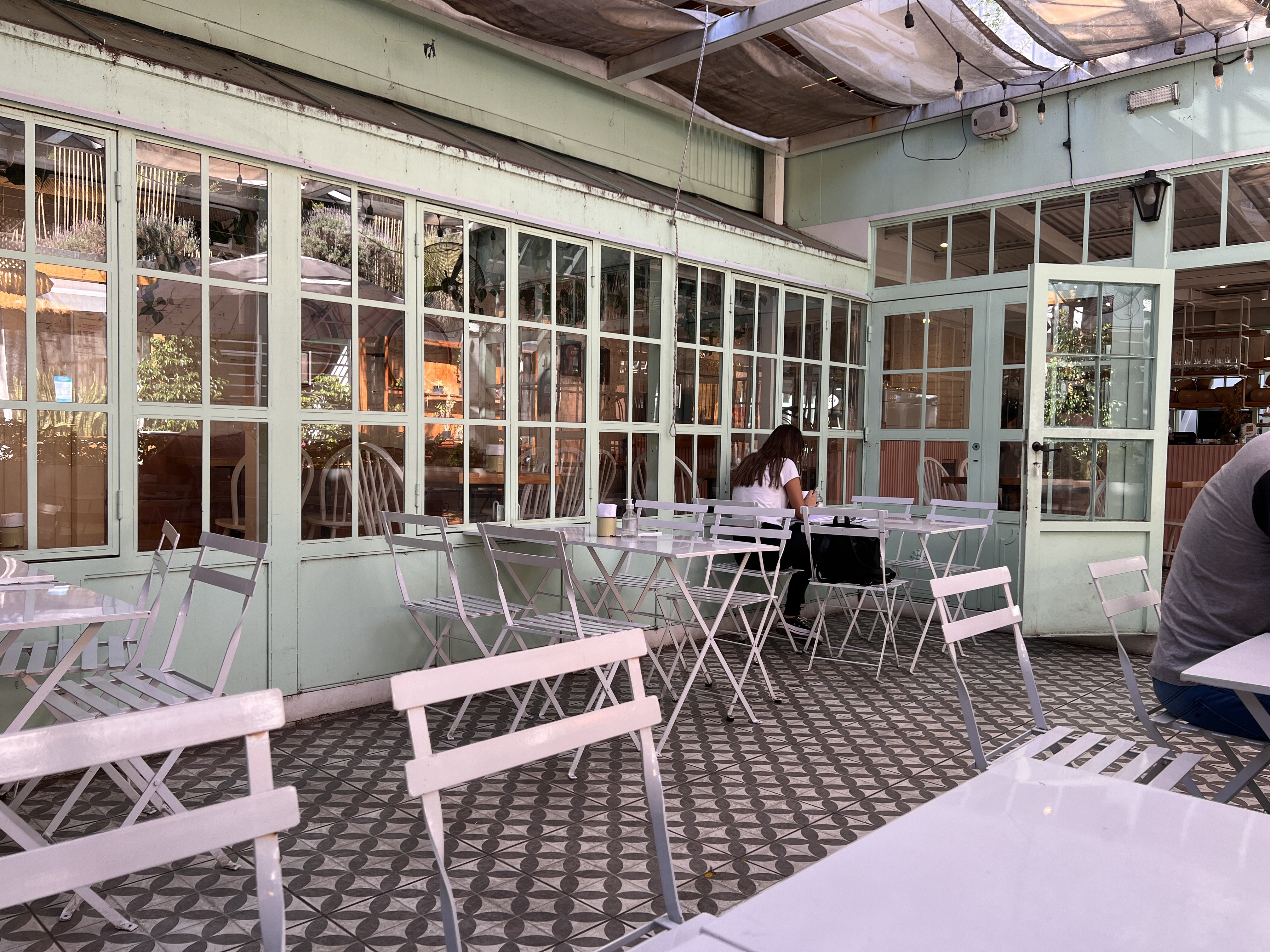 The outside patio at La capke in Cordoba
The outside patio at La capke in Cordoba
3.4. Standard 69
Standard 69 is a restaurant known for its drinks and small, tapa-sized servings.
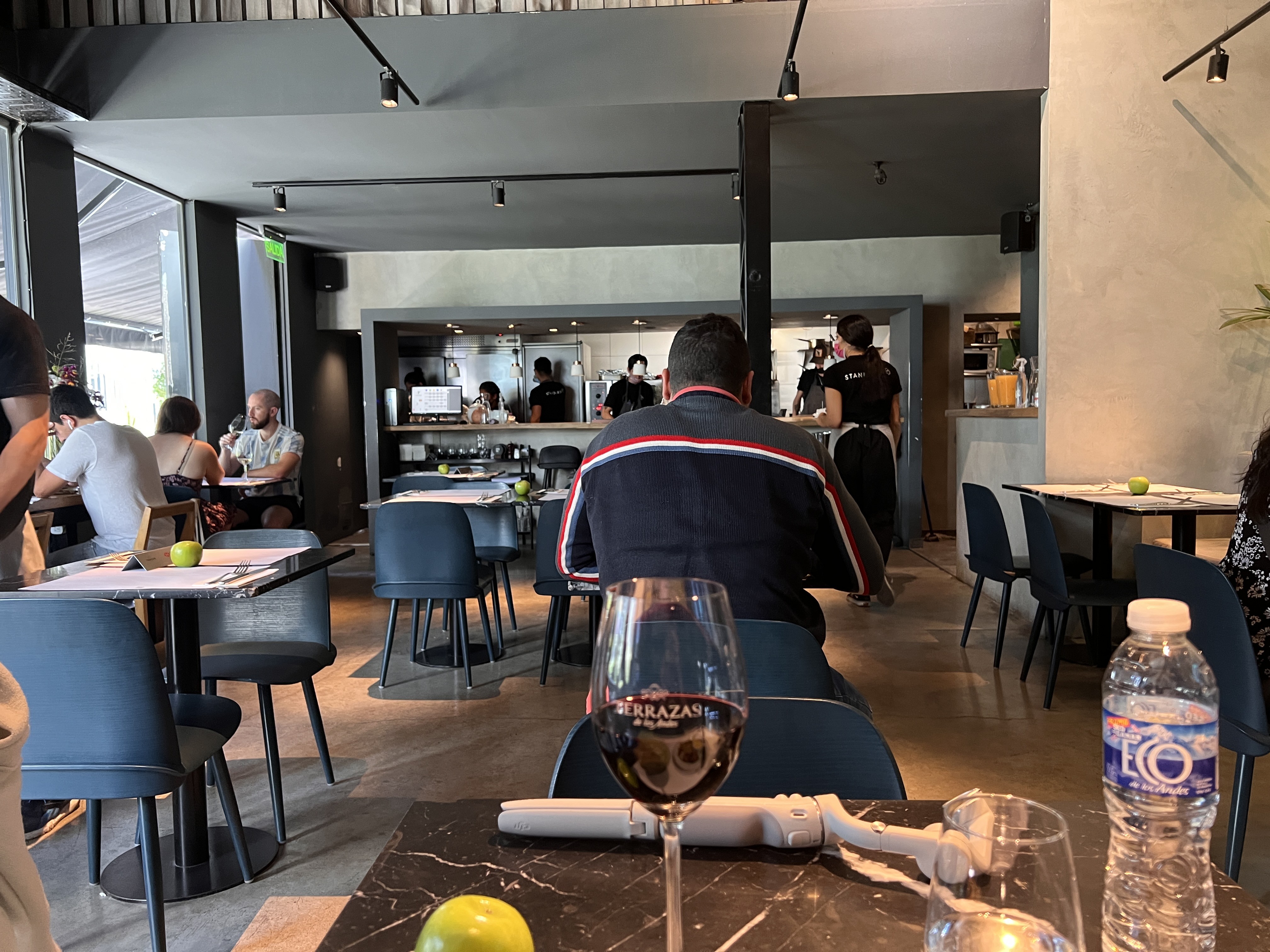 Standard 69
Standard 69
3.5. La Cocina de Fazzio
La Cocina de Fazzio is famous for its seafood and lively atmosphere.
- Atmosphere: Energetic and wild, with music and cheering during lunch.
- Specialty: Seafood.
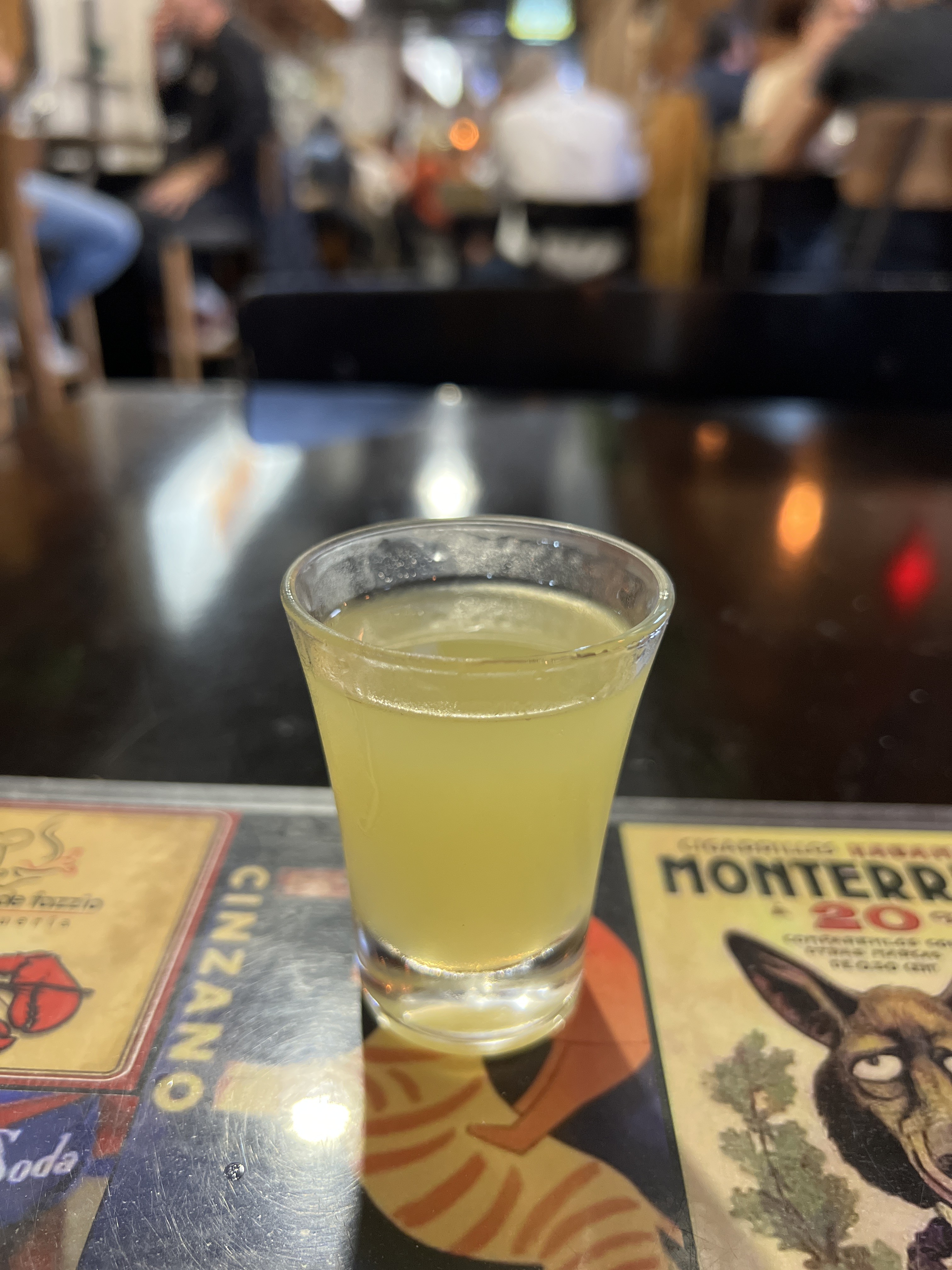 This is a drink at the Fazzio restaurant in Cordoba, one of the best cities in Argentina
This is a drink at the Fazzio restaurant in Cordoba, one of the best cities in Argentina
3.6. Mercado Norte (North Market)
Mercado Norte is a traditional market offering a variety of meats, cheeses, and produce.
- Offerings: Cheeses, ham, sausage, veggies, and whole pigs hanging from their feet.
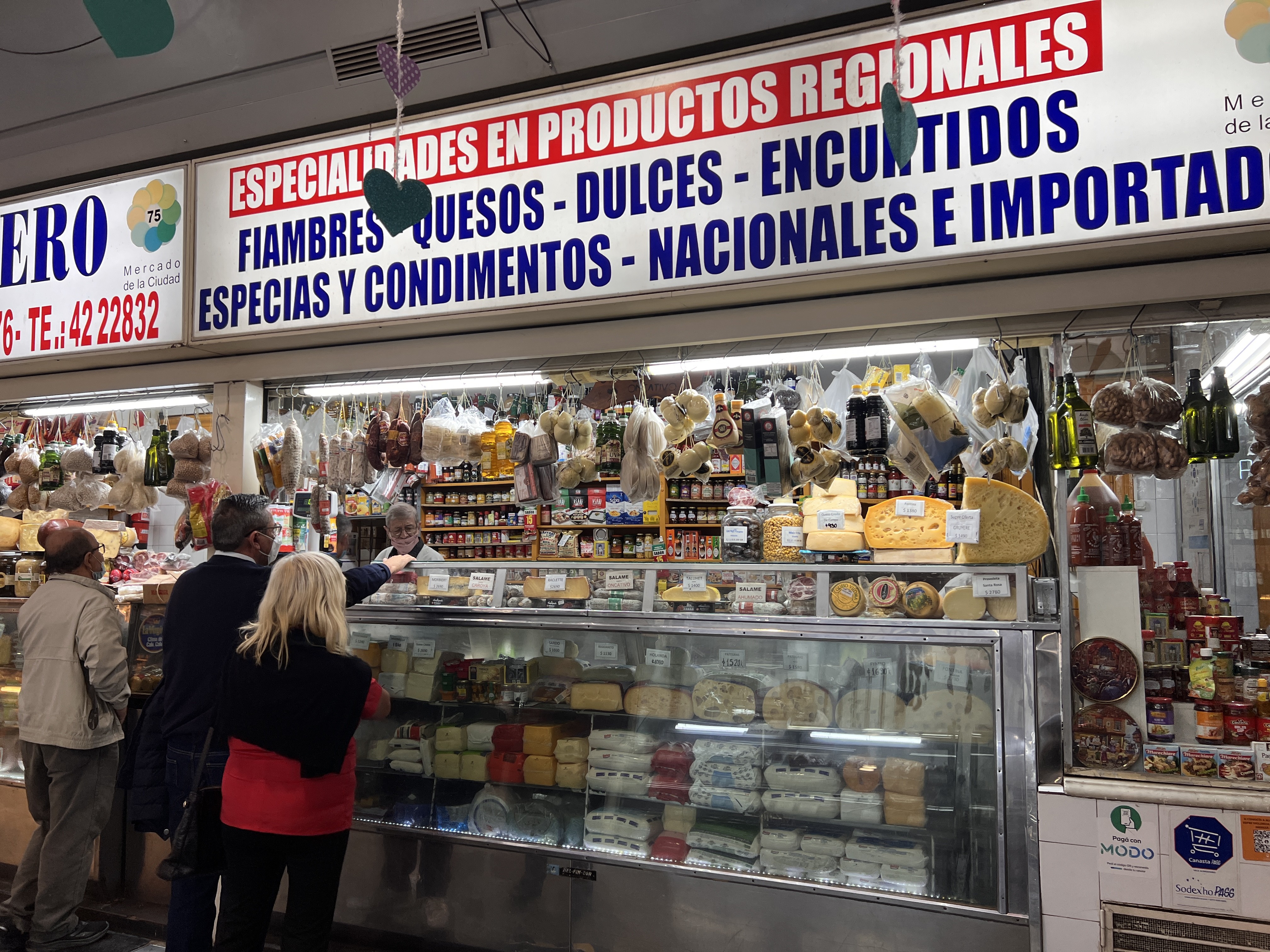 A fiambres counter in the Mercado Norte in Cordoba.
A fiambres counter in the Mercado Norte in Cordoba.
3.7. Mercado de las Rosas
Mercado de las Rosas is located in the Cerro de las Rosas neighborhood, offering outdoor dining with floral decorations.
3.8. Mercado Alberdi
Mercado Alberdi is a renovated hipster market offering craft beer and small restaurants.
- Atmosphere: Young and trendy.
- Hours: Open from 6 pm to midnight, closed on Monday and Tuesday.
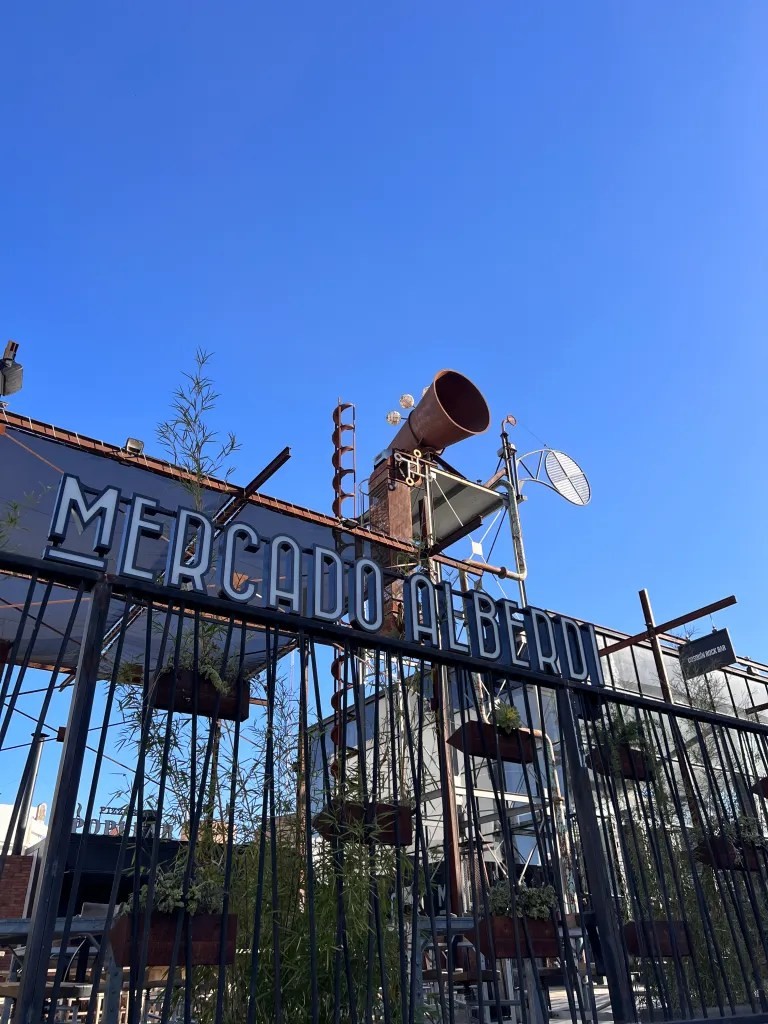 One of the best Things to Do in Córdoba is visit the Mercado Alberdi, which is a hip place to go out and eat food.
One of the best Things to Do in Córdoba is visit the Mercado Alberdi, which is a hip place to go out and eat food.
3.9. LA TERMINAL – Ruin Bar
LA TERMINAL is a fun restaurant and bar with a large open space decorated in the style of Budapest ruin bars.
3.10. K-Mix Korean Food
K-Mix Korean Food offers authentic and delicious Korean cuisine.
- Specialty: Authentic Korean dishes.
3.11. Fernet & Coca-Cola
Fernet & Coca-Cola is a popular drink in Córdoba, originating from the city’s university students in the 1980s.
 Fernet and Coca Cola
Fernet and Coca Cola
4. Navigating Córdoba: Getting Around
Getting around Córdoba is relatively easy, with several transportation options available.
4.1. Walking
The city center and many neighborhoods are walkable, allowing you to explore attractions and restaurants on foot.
4.2. Biking
With the addition of the Ciclovía, biking has become more accessible. Free bike rentals are available at stations around the city.
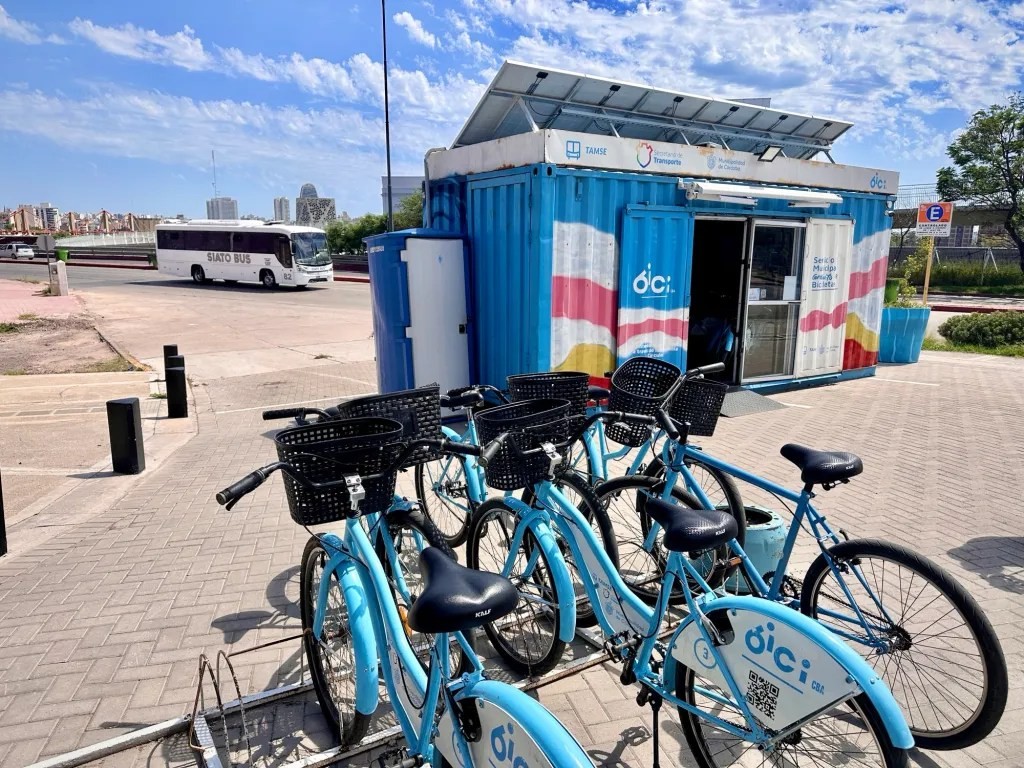 Several blue city bikes are in racks in the foreground. In the background you can see a blue building where you rent the bikes.
Several blue city bikes are in racks in the foreground. In the background you can see a blue building where you rent the bikes.
4.3. Bus
City buses are available, but less frequent than in Buenos Aires. A Red Bus card is required.
4.4. Taxi and Ridesharing Apps
Taxis are readily available, and Uber and Didi operate in Córdoba, offering convenient transportation options.
5. Getting To and From Córdoba
Córdoba is accessible by bus and air, with convenient options for reaching the city.
5.1. Getting to Córdoba by Bus
The main bus terminal is large, with separate sections for long-distance and provincial buses.
- Tickets: Available at bus company counters in both the old and new terminals.
- Schedules: Check Unibus or Busbud for schedules.
5.2. Getting to Córdoba Capital from the Airport
The Ingeniero Aeronáutico Ambrosio L.V. Taravella International Airport is the main airport, with flights from Buenos Aires and other major cities.
5.2.1. Taxi
Yellow taxis are available outside the airport, costing around $15-$20 to the city center.
5.2.2. Ridesharing Apps
Uber and Didi are available, with pickups often on the upper level, costing around $10-$12 to the city center.
5.2.3. Bus
City Bus 25 connects the airport to the city center, costing around $1.20. A Tarjeta Red Bus is required.
5.2.4. AeroBus
The AeroBus runs from 7 am to 11 pm, every hour on the hour, costing 4800 pesos ($5), with stops at Patio Olmos, Parana street/Blvd Illia, and the bus terminal.
6. Exploring Beyond: Day Trips from Córdoba
Córdoba is a great base for exploring the surrounding region. Here are some popular day trips:
- Tren de las Sierras
- Villa General Belgrano and La Cumbrecita
- Carlos Paz
- La Cumbre
- Los Gigantes
- Mina Clavero
- Durazno
- Capilla del Monte & San Marcos Sierras
- Alta Gracia
7. Essential Travel Tips for Visiting Córdoba
To ensure a smooth and enjoyable trip to Córdoba, consider these essential travel tips:
7.1. Best Time to Visit
The best times to visit Córdoba are during the spring (September – November) and fall (March – May) for perfect weather.
7.2. Safety
Córdoba is generally safe, but take precautions against petty theft.
7.3. Weather
The weather is mild, with warmer temperatures than Buenos Aires. Summers can be hot, while winters are mild.
8. Accommodation Options in Córdoba
Córdoba offers a variety of accommodation options to suit different budgets and preferences.
8.1. Hostels
- Lacandona Hostel: Affordable hostel near the bus station.
- Key Features: Comfortable beds, clean rooms, and included breakfast.
- Bucanaan Hostel Boutique: Centrally located hostel with a seasonal outdoor swimming pool and free breakfast.
- Key Features: Hot tub, free private parking, garden, and shared lounge.
8.2. Hotels
- Windsor Hotel: Centrally located hotel with a heated rooftop swimming pool.
- Key Features: Massage services, on-site restaurant.
- NH Córdoba Urbano: 4-star hotel with a rooftop terrace offering great city views.
- Key Features: Included breakfast and proximity to restaurants and nightlife.
- Hotel de la Cañada: Located near the canal, with a garden and outdoor swimming pool.
- Key Features: Restaurant, fitness center, free Wi-Fi, and continental breakfast.
9. Frequently Asked Questions (FAQs) About Córdoba Argentina Tourism
9.1. Is Córdoba Argentina worth visiting?
Yes, Córdoba is definitely worth visiting, offering a unique blend of history, culture, and natural beauty. According to Argentina’s Ministry of Tourism, Córdoba consistently attracts a significant number of tourists annually, attesting to its appeal and attractiveness as a destination.
9.2. Is Córdoba safe for tourists?
Yes, Córdoba is generally safe for tourists. However, like any major city, it’s important to take standard safety precautions, such as being aware of your surroundings and avoiding poorly lit areas at night. According to a 2023 report by the Córdoba Provincial Police, the city has a moderate crime rate, with most incidents involving petty theft.
9.3. What is the best time to visit Córdoba?
The best time to visit Córdoba is during the spring (September to November) and fall (March to May). The weather during these months is mild and pleasant, making it ideal for exploring the city and its surrounding areas.
9.4. How many days do I need in Córdoba?
Ideally, you should spend at least 3 to 4 days in Córdoba to fully experience its main attractions and cultural offerings. This allows you to explore the historic quarter, visit museums, enjoy the local cuisine, and take a day trip to the Sierras de Córdoba.
9.5. What is Córdoba known for?
Córdoba is known for its rich history, well-preserved colonial architecture, and vibrant cultural scene. It’s also home to Argentina’s oldest university and is a major educational center.
9.6. How do I get around in Córdoba?
You can get around Córdoba by walking, public buses, taxis, or ride-sharing apps like Uber and Didi. The city center is easily walkable, and buses are a convenient option for longer distances.
9.7. What are the must-try foods in Córdoba?
Some must-try foods in Córdoba include asado (Argentine barbecue), empanadas, locro (a hearty stew), and fernet & Coca-Cola, a popular local drink.
9.8. Are there any day trips I can take from Córdoba?
Yes, there are several great day trips you can take from Córdoba, including Villa General Belgrano, Carlos Paz, and the Sierras de Córdoba.
9.9. What is the currency used in Córdoba?
The currency used in Córdoba is the Argentine Peso (ARS). It’s advisable to have some local currency for small purchases, although credit cards are widely accepted in larger establishments.
9.10. Do I need to speak Spanish to visit Córdoba?
While many people in tourist areas speak some English, knowing basic Spanish phrases will greatly enhance your experience. It’s always appreciated when visitors make an effort to speak the local language.
10. Discover Argentina with SIXT.VN
Córdoba Argentina tourism offers a rich and diverse travel experience, blending historical charm with modern vibrancy. From its UNESCO World Heritage sites to its bustling culinary scene and stunning natural surroundings, Córdoba is a destination that captivates and delights. As a major city in Argentina, Córdoba is well-connected, safe, and offers a range of activities and attractions to suit every traveler.
Ready to explore Córdoba? Let SIXT.VN be your trusted partner in planning an unforgettable trip. Contact us today to learn more about our travel packages and start your Córdoba adventure!
Contact Information:
- Address: 260 Cau Giay, Hanoi, Vietnam
- Hotline/Whatsapp: +84 986 244 358
- Website: SIXT.VN



